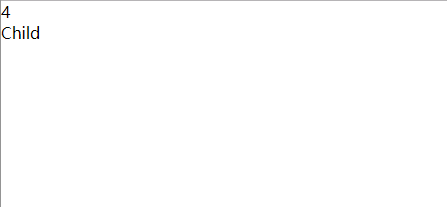React 组件Child
我们先来看一个例子
import React from 'react';
import Main from './Main';
import Child from './Child';
class App extends React.Component {
render() {
return (
<div className="App">
<Main id='4'>
{(files)=>files?<Child files={files}></Child>:<div>等待中!!!</div>}
</Main>
</div>
);
}
}
export default App;
在App组件中,其中Main组件中包含了一个Child组件,这个Child组件就是Main组件的子组件。
接下来我们看看Main和Child中写了些什么
- 组件Main
import React from 'react';
class Main extends React.Component {
constructor(props) {
super(props)
this.state = {
files:''
}
}
componentDidMount(){
const title = this.props.id
this.setState({files:title})
}
render(){
const children = this.props.children(this.state.files)
return(
<div>{children}</div>
)
}
}
export default Main
- 组件Child
import React from 'react';
class Child extends React.Component {
constructor(props) {
super(props)
}
render(){
return(
<div>
{this.props.files}
<div>Child</div>
</div>
)
}
}
export default Child
在这里我通过React的组件Child,来进行操作。可以通过this.props.children来得到父组件Main之下的子组件Child
在App组件中通过props传递给Main组件一个名为id的参数,使用?:进行一个判断如果,files值有传递那就渲染Child,如果没有那就渲染等待中组件
<div className="App">
<Main id='4'>
{(files)=>files?<Child files={files}></Child>:<div>等待中!!!</div>}
</Main>
</div>
在Main中接受props传递过来的props。通过处理props,改变state,从而改变传递给子组件的state
componentDidMount(){
const title = this.props.id
this.setState({files:title})
}
render(){
const children = this.props.children(this.state.files)
return(
<div>{children}</div>
)
}
关键的问题是获取子组件,所以就引出了最重要的一环this.props.children
这里的this.props.children(this.state.files)只是获取子组件,而且子组件也不会自动渲染,需要在父组件中渲染一次,所以要return(<div>{children}</div>),这样才能真正渲染出子组件。
this.props.children
我们来看看在Main组件中我们能通过this.props.children获取什么。
 它获取到了整个三目运算符判断后的结果为
它获取到了整个三目运算符判断后的结果为<div>等待中!!!</div>,因为此时还没有进行setState,在经过setState后它就变成了<Child files={files}></Child>,这样就可以渲染Main的子组件。如下图
